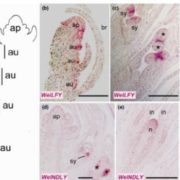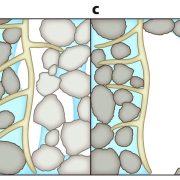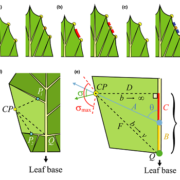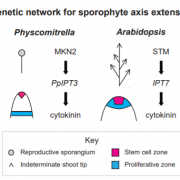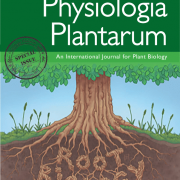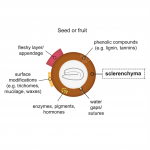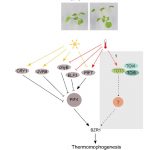A tale of two morphs: seed coat differentiation in the dimorphic diaspore model Aethionema arabicum (Brassicaceae) (Plant J.)
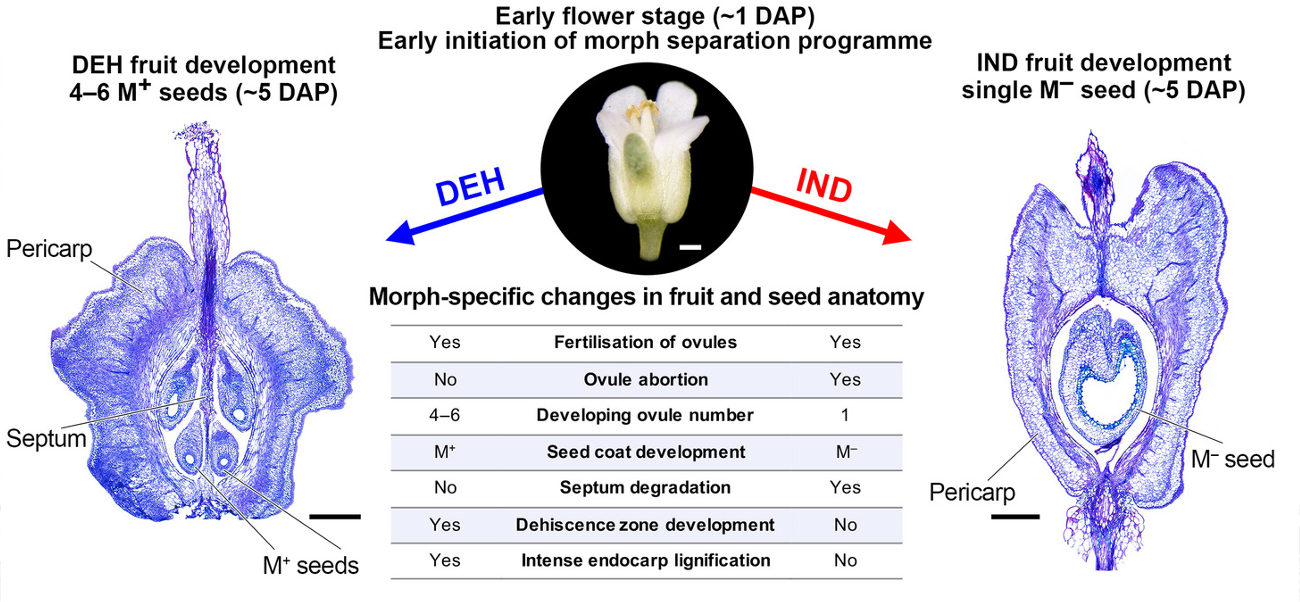 While most plants have a single fruit and seed form, several species produce two or more distinct fruit and seed types, although the mechanisms behind this phenomenon remain unknown. Here, Arshad and colleagues assess the differences in the internal morphology and transcriptomic profile throughout development of the two diaspore morphs of Aethionema arabicum. One morph is a dehiscent fruit with multiple mucilage-producing seeds (DEH), while the other is an indehiscent fruit with a single seed that does not produce mucilage (IND). Comparative image analysis showed that flowers that will give rise to each morph appear identical before pollination. However, soon after pollination their morphology starts to diverge. Accordingly, the transcriptome of flower buds is quite similar between morphs, but it becomes increasingly different after pollination. Consequently, differences in the developmental program of each morph arise in the earliest stages of fruit development. Various transcription factors have distinct expression profiles between morphs, including potential genes related to ovule abortion, seed coat differentiation and mucilage production. This paper provides a starting point to understand the mechanisms behind producing fruits and seeds of different morphology in a single plant. (Summary by Carlos A. Ordóñez-Parra @caordonezparra) Plant J. 10.1111/tpj.15283
While most plants have a single fruit and seed form, several species produce two or more distinct fruit and seed types, although the mechanisms behind this phenomenon remain unknown. Here, Arshad and colleagues assess the differences in the internal morphology and transcriptomic profile throughout development of the two diaspore morphs of Aethionema arabicum. One morph is a dehiscent fruit with multiple mucilage-producing seeds (DEH), while the other is an indehiscent fruit with a single seed that does not produce mucilage (IND). Comparative image analysis showed that flowers that will give rise to each morph appear identical before pollination. However, soon after pollination their morphology starts to diverge. Accordingly, the transcriptome of flower buds is quite similar between morphs, but it becomes increasingly different after pollination. Consequently, differences in the developmental program of each morph arise in the earliest stages of fruit development. Various transcription factors have distinct expression profiles between morphs, including potential genes related to ovule abortion, seed coat differentiation and mucilage production. This paper provides a starting point to understand the mechanisms behind producing fruits and seeds of different morphology in a single plant. (Summary by Carlos A. Ordóñez-Parra @caordonezparra) Plant J. 10.1111/tpj.15283


